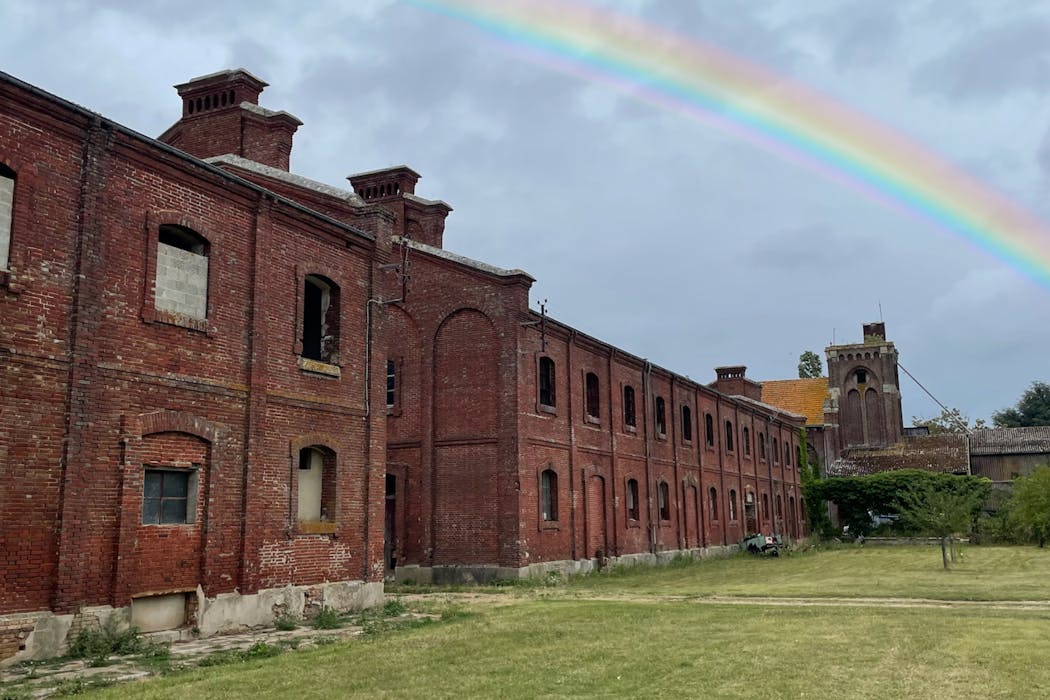
The 1969 Stonewall riot, a pivotal episode of LGBTQ+ resistance to a police raid, was a turning point in the western gay rights movement. Today, Pride events are held each year at the end of June in memory of this uprising. Yet, Stonewall was not the first queer rebellion.
My recent research, published in the Journal of Homosexuality, uncovered a queer uprising which took place in 1905, more than 60 years before Stonewall, at a youth detention site in France.
In 19th-century France, an underground queer scene was developing around bars and brothels in Paris. Same-sex relationships were also common in single-gender institutions, like in the military or in prisons, although frowned upon. The late 19th century saw rising anxieties surrounding queer sexualities, which were increasingly being labelled as medical disorders.
Same-sex relationships had become commonplace in some French youth penal colonies. These were institutions where working-class youths aged between eight and 21 years old were incarcerated, for several months to several years, often after an arrest for vagrancy or theft. There they were forced to perform agricultural and industrial labour under very harsh conditions.
Les Douaires was a youth penal colony for detained boys in Normandy (northern France). In the 1900s, a growing number of boys aged over 16 were sent to Les Douaires. Rumours spread of frequent sexual interactions between detained boys, supposedly happening in the courtyards of the penal colony.

The penal administration reacted by instituting a compulsory afternoon nap. This was an explicit attempt to cut down time spent in the courtyards and therefore reduce the frequency of same-sex relationships.
This measure was clearly not to the liking of the detained population. On July 31 1905, 200 detained boys refused to take the nap and instead gathered in the courtyard.
Several hours of open riot ensued, during which the boys smashed over 200 windows, attacked staff members, forcing them to retreat, and ripped some of the fences surrounding the courtyards. They also tried to escape together, but a staff member managed to close the main gates of the penal colony just as the riot was breaking out.
The staff who had retreated telegraphed the police and the army for backup, and the riot calmed down within a few hours. A small military outpost of ten soldiers was established nearby, and additional warders were sent from Paris. In the following days, 26 detained boys identified as leaders of the insurrection were transferred to another penal colony.
The 1905 riot was not the first episode of collective resistance to erupt at Les Douaires. In June 1880, the boys had rebelled after a warder had hit a child. Staff brutality was omnipresent, and in the 1870s the penal colony’s director had been reprimanded for routinely whipping the inmates. The harsh living conditions led to recurrent outbreaks of diseases, and the boys at Les Douaires were several times more likely to die than free young people outside.
In the months preceding the July 1905 riot, socialist ideas had started spreading among the older boys at Les Douaires. A letter from the penal colony’s director written a few days after the uprising points to the growing political climate and the refusal of the nap, instituted to limit homosexual relationships, as causes of the riot.

It must be noted that while the detained youth engaged in same-sex behaviour that we might now describe as queer, there is no reason to believe this translated into any sense of queer identity. Not least because contemporary western notions of sexual identity are a relatively recent development. Nonetheless, the July 1905 mutiny at Les Douaires remains a significant event in LGBTQ+ history, as one of the earliest documented episodes of overt collective resistance to anti-queer repression.
Although the late 19th and early 20th centuries were marked by increasing police raids on LGBTQ+ venues and the emergence of early campaigning groups, there is little evidence for similar moments of mass collective resistance to homophobic policies and repression.
From the 1905 Les Douaires riot to the 1969 Stonewall riot, queer uprisings most often took place in reaction to police repression or, as in this case, within the walls of a prison. In a now-famous speech on the fourth anniversary of the Stonewall riots in 1973, transgender activist Sylvia Rivera reminded the crowd of their “gay brothers and gay sisters in jail”.
In countries like the UK, the US, or France, LGBTQ+ people in prison, especially those who are not white, are still at higher risk of sexual assault and violence and have high rates of suicides.
The 1905 Les Douaires riot stands as an early chapter in this unfinished history of resistance to anti-queer and state violence.
Looking for something good? Cut through the noise with a carefully curated selection of the latest releases, live events and exhibitions, straight to your inbox every fortnight, on Fridays. Sign up here.
This article is republished from The Conversation, a nonprofit, independent news organization bringing you facts and trustworthy analysis to help you make sense of our complex world. It was written by: Elias Michaut, UCL
Read more:
- Stonewall riots: global legacy shows there’s no simple story of progress for gay rights
- From Stonewall to Pride, the fight for equal rights has been rooted in resistance led by Black transwomen
- Queer theatre in the 19th century was a place of codes, cross-dressing and blackmail
Elias Michaut received doctoral funding for this research from the London Arts and Humanities Partnership (LAHP).


 The Conversation
The Conversation
 Associated Press Top News
Associated Press Top News New York Post
New York Post @MSNBC Video
@MSNBC Video AlterNet
AlterNet NFL New York Giants
NFL New York Giants POPSUGAR
POPSUGAR The Babylon Bee
The Babylon Bee CBS News
CBS News CBS19 News Crime
CBS19 News Crime